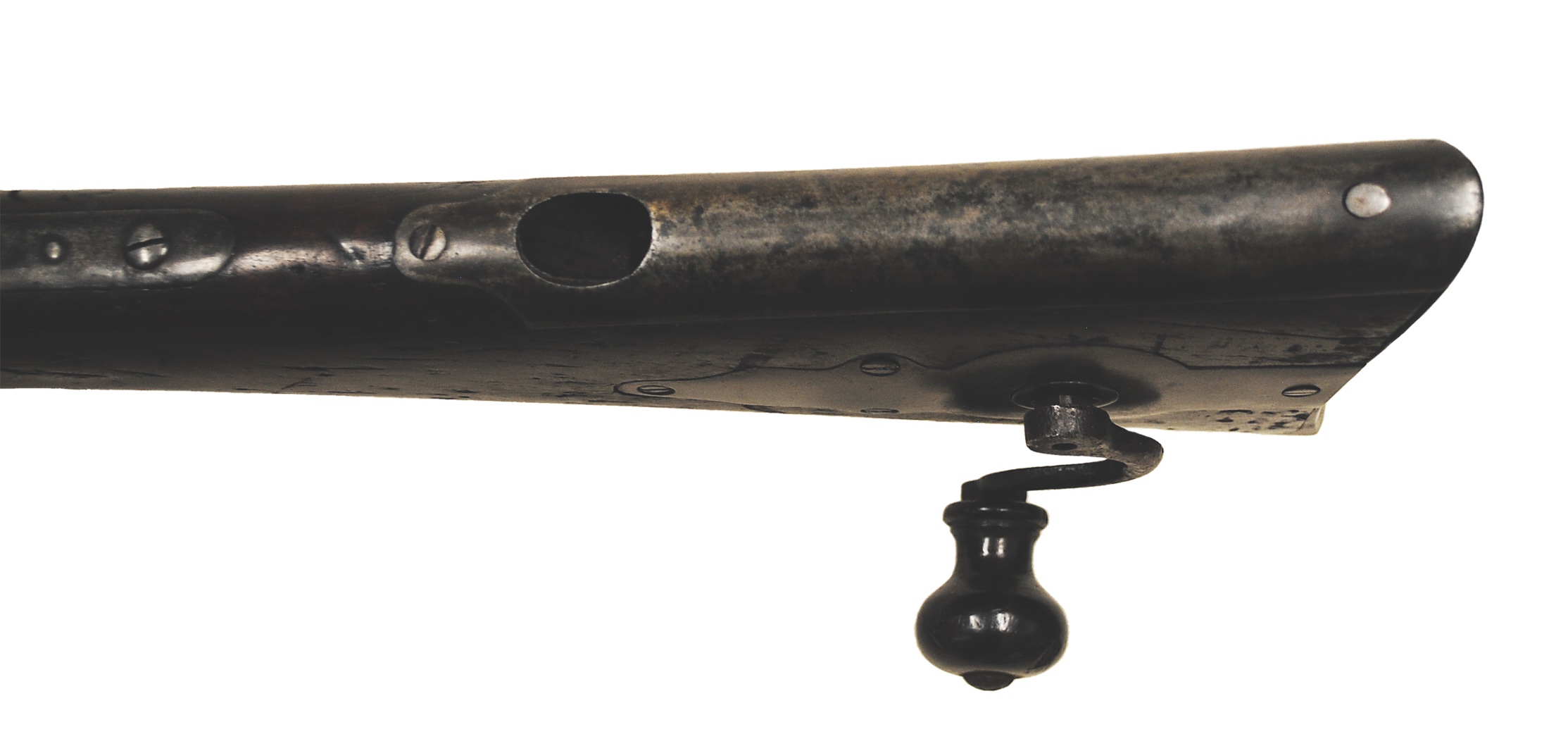Necessity is the mother of invention, as the saying goes, and many Civil War soldiers undoubtedly ranked coffee as a necessity—right there with shoes, tobacco, and bullets. That prompted one enterprising colonel to invent a device using two of the four together: coffee and bullets. At his own expense, Colonel Walter King of the 4th Missouri State Cavalry (Federal) adapted a Sharps breech-loading carbine to include a simple coffee grinder. In theory, the concept was good. Coffee beans—or perhaps corn or wheat kernels—would be inserted in a compartment inside the the buttstock and then crushed by cranking the attached grind handle, with the contents then poured from a brass opening in the stock. As it turned out, the contraption just wasn’t that efficient when it came to grinding whole coffee beans.
The .52-caliber carbine above—part of the John L. Nau III Civil War Collection in Houston, Texas—is identified as a “New Model 1863.” Other than the handle, it appears to be otherwise unaltered.
King would have only a small number of the weapons modified. The resourceful colonel believed they would be particularly advantageous for troopers serving in frontier areas, where access to quartermaster stores was limited. He included his carbine as part of a “Cavalry Riding Equipment” package that he took for approval on January 6, 1865, before an inspection board convened by the U.S. Ordnance Department. The board thanked him for his efforts but deemed the package unsuitable for further development.
The 4th Missouri served in the Department of Missouri from May 1862 until the end of the war, operating against Confederate cavalry raiders and bushwhackers. In late summer 1863, King and his troopers crossed into Kansas as part of the Federal pursuit of William Quantrill’s Raiders after the Lawrence Massacre in August. In his report to Brig. Gen. Thomas Ewing Jr., commander of the District of the Border, King described his strategy: “Thinking he designed returning to the Blue Hills to scatter out, I marched as rapidly as possible to the position that would enable me to cut him off…and keep him in the open country.”
Quantrill and his men escaped the trap and disappeared inside Missouri. The 4th was later part of the Union effort to thwart Sterling Price’s ill-fated 1864 Missouri Raid. It was a solid, though not extraordinary, record for a unit that probably would have gained little attention in Civil War annals if not for the unique invention of its one-time commander.





